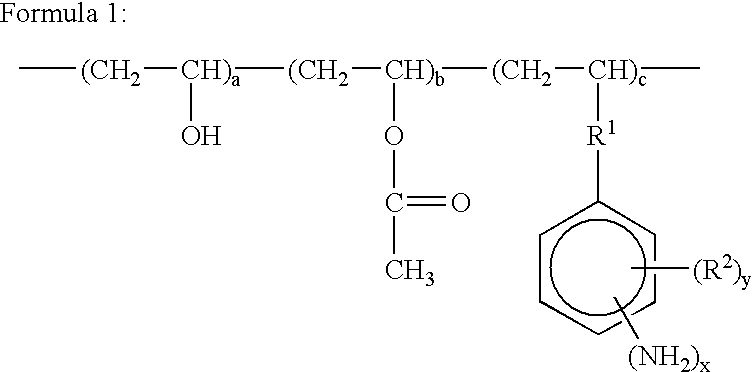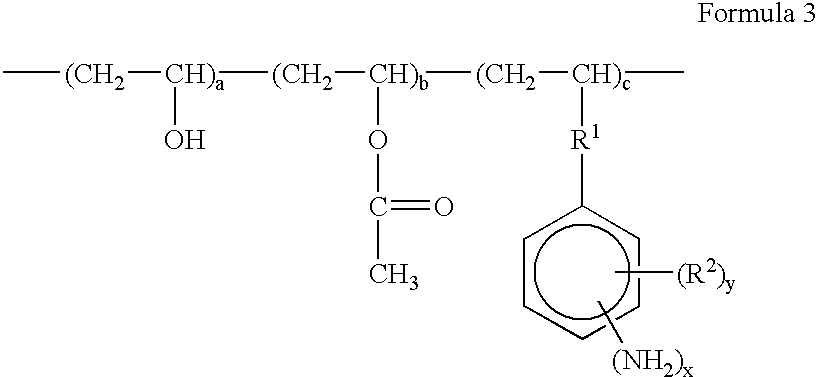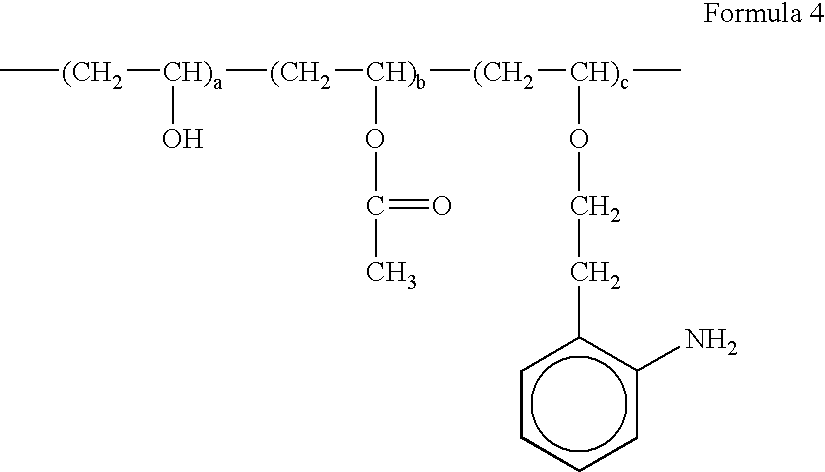Highly permeable composite reverse osmosis membrane and method of producing the same
a reverse osmosis membrane and high permeable technology, applied in gravity filters, separation processes, filtration separation, etc., can solve the problems of increasing facilities and operating costs, reducing permeable water quantity, and above-mentioned composite reverse osmosis membranes cannot function sufficiently, so as to prevent the deposition of insoluble materials and economic permeable water level
- Summary
- Abstract
- Description
- Claims
- Application Information
AI Technical Summary
Benefits of technology
Problems solved by technology
Method used
Image
Examples
example 1
An aqueous solution including 2 weight % of polyvinyl alcohol-based amine compound having a side chain amino group represented by Formula 4, 0.5 weight % of sodium lauryl sulfate and 0.5 weight % of sodium hydroxide was applied on a polysulfone-based ultrafiltration membrane (microporous support) before removing extra aqueous solution, so that a layer of the aqueous solution was formed on the support:
wherein a=8, b=10 and c=500.
Subsequently, the layer was contacted with an isooctane solution including 1 weight % of trimesic acid chloride for interfacial polycondensation on the support, and maintaining for three minutes in a 120° C. dryer so that a polymer membrane was formed on the microporous support, generating a composite reverse osmosis membrane.
The product was then evaluated. The salt rejection was 50%, and the permeable flux was 3.2 m3 / m2·d. When the performance was evaluated again under the same condition after passing pH 12 alkaline solution through this membrane for three ...
examples 2-4
Composite reverse osmosis membranes were formed in the same manner as described in Example 1 except that the concentration of the trimesic acid chloride was varied. The performance of the obtained composite reverse osmosis membranes is shown in Table 1.
TABLE 1Trimesic acid chlorideSaltPermeable fluxconcentration (wt %)rejection (%)(m3 / m2 · d)Example 20.1343.7Example 30.25502.5Example 43385.3
As shown in Table 1, products of the present invention provide high permeable flux under a low pressure of 5 kg / cm2. Moreover, sufficiently high permeable flux was obtained even under an operation pressure of 3 kg / cm2 (city water level).
PUM
| Property | Measurement | Unit |
|---|---|---|
| Fraction | aaaaa | aaaaa |
| Fraction | aaaaa | aaaaa |
| Density | aaaaa | aaaaa |
Abstract
Description
Claims
Application Information
 Login to View More
Login to View More - R&D
- Intellectual Property
- Life Sciences
- Materials
- Tech Scout
- Unparalleled Data Quality
- Higher Quality Content
- 60% Fewer Hallucinations
Browse by: Latest US Patents, China's latest patents, Technical Efficacy Thesaurus, Application Domain, Technology Topic, Popular Technical Reports.
© 2025 PatSnap. All rights reserved.Legal|Privacy policy|Modern Slavery Act Transparency Statement|Sitemap|About US| Contact US: help@patsnap.com



